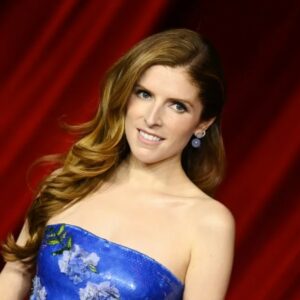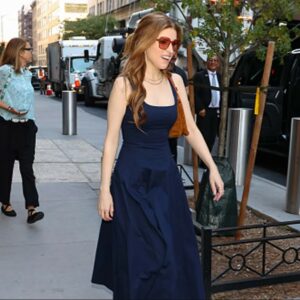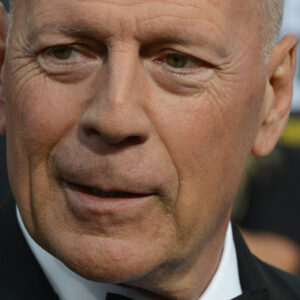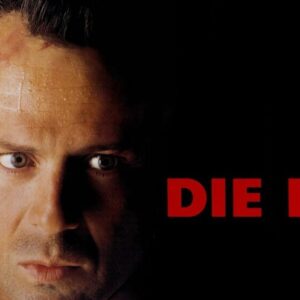In the sprawling landscape of Hollywood, few actors have managed to navigate the industry’s ever-changing tides with as much finesse as Ryan Gosling. From his early days as a heartthrob in romantic dramas to his later portrayals of brooding anti-heroes and mysterious loners, Gosling’s career is a testament to his versatility and the evolving nature of cinema itself. This article delves into the evolution of Gosling’s on-screen characters, examining how his roles have not only shaped his career but also mirrored broader trends in film and culture.
Early Career: The Romantic Lead
Ryan Gosling’s journey into the hearts of audiences began with his role in the 2004 romantic drama The Notebook. As Noah Calhoun, Gosling embodied the quintessential romantic lead—a sensitive, emotionally complex character whose love story transcends time and societal barriers. This role catapulted Gosling into the spotlight, solidifying his image as a heartthrob and establishing him as a symbol of idealized love and relationships.
In The Notebook, Gosling’s portrayal of Noah was marked by an intense vulnerability that resonated deeply with audiences. His character’s devotion to Allie, played by Rachel McAdams, set a standard for romantic leads in the early 2000s—a time when Hollywood was still enamored with traditional, if not slightly nostalgic, portrayals of love. Noah was not just a lover; he was an embodiment of unwavering commitment, a man who would build a house with his bare hands to fulfill a promise to the woman he loved. This image of the perfect, albeit tortured, romantic lead became a recurring theme in Gosling’s early career.
But while The Notebook may have been his most iconic early role, it was not an isolated incident. Gosling also starred in films like Half Nelson (2006) and Lars and the Real Girl (2007), where he portrayed characters who, though flawed, were deeply empathetic and driven by an earnest desire for connection. These roles reinforced his status as the sensitive leading man, a figure who, in many ways, was the antithesis of the hyper-masculine action heroes that dominated the box office during the same period.
The Brooding Anti-Hero
As the 2010s approached, a noticeable shift occurred in both Hollywood and Gosling’s career. The rise of morally ambiguous protagonists and darker, more complex narratives began to dominate the cinematic landscape, and Gosling was quick to adapt to this trend. In films like Drive (2011) and Blue Valentine (2010), he transitioned from the romantic lead to the brooding anti-hero—a character archetype that would come to define the next phase of his career.
In Drive, Gosling’s character, known only as “The Driver,” is a man of few words but many layers. The film’s minimalist dialogue and stylized violence presented a stark contrast to the emotionally charged performances that had previously defined his career. Drive is not just a film about a getaway driver; it’s a meditation on violence, identity, and the thin line between heroism and villainy. The Driver is both a protector and a predator, a man whose silence speaks volumes about the inner turmoil that defines him.
Blue Valentine offered another departure from Gosling’s earlier roles, portraying a raw and unflinchingly honest look at the disintegration of a marriage. His character, Dean, is deeply flawed—struggling with insecurity, alcoholism, and a desperate need to hold onto a love that is slipping away. The film’s nonlinear narrative structure, switching between the couple’s courtship and the eventual collapse of their relationship, mirrored the fragmented and often chaotic nature of real-life romance. Gosling’s performance was lauded for its authenticity, capturing the complexities of a man who is both deeply in love and profoundly lost.
These roles marked a significant departure from the “pretty boy” persona that had previously defined Gosling’s career. They also reflected a broader trend in Hollywood towards exploring the darker, more ambiguous aspects of human nature. The brooding anti-hero became a staple of modern cinema, and Gosling was at the forefront of this movement, bringing a level of depth and nuance to his characters that resonated with audiences and critics alike.
The Mysterious Loner
As Gosling’s career continued to evolve, so too did his on-screen personas. The next stage in his evolution saw him take on the role of the mysterious loner—characters who are often isolated, enigmatic, and burdened by existential questions. Films like Only God Forgives (2013) and Blade Runner 2049 (2017) exemplify this phase of Gosling’s career, where he delved into characters who are as much defined by what they do not say as by what they do.
In Only God Forgives, Gosling’s character, Julian, is a man haunted by guilt and the shadow of his domineering mother. The film, directed by Nicolas Winding Refn, is a surreal and visually striking exploration of revenge, redemption, and the darker aspects of the human psyche. Julian’s stoic demeanor and internalized rage make him a difficult character to read, yet it is precisely this ambiguity that makes him so compelling. The film’s minimalist dialogue and emphasis on mood and atmosphere over narrative further accentuate the sense of isolation and detachment that defines Julian.
Blade Runner 2049 saw Gosling step into the shoes of Officer K, a replicant tasked with hunting down his own kind. The film, a sequel to Ridley Scott’s 1982 sci-fi classic, is a sprawling meditation on identity, humanity, and the nature of existence. Officer K is a man—or rather, a machine—caught between two worlds, struggling to understand his place in a society that sees him as less than human. Gosling’s portrayal of K is both haunting and introspective, capturing the quiet desperation of a character who is searching for meaning in a world that denies him one.
These roles reflect a broader trend in cinema towards introspective, minimalist storytelling and the exploration of the human condition. The mysterious loner is a character archetype that has long fascinated filmmakers and audiences alike, and Gosling’s ability to bring depth and nuance to these roles has solidified his status as one of Hollywood’s most versatile actors.
The Multifaceted Performer
In more recent years, Gosling has demonstrated his range by venturing into diverse genres and taking on a variety of roles. From his comedic performance in The Nice Guys (2016) to his musical turn in La La Land (2016), Gosling has proven time and again that he is not confined to a single type of character. This willingness to explore different genres and styles has not only broadened his appeal but also reflected the increasingly genre-bending nature of modern Hollywood.
The Nice Guys saw Gosling team up with Russell Crowe in a buddy-cop comedy that harkens back to the action-comedies of the 1980s. Gosling’s character, Holland March, is a bumbling private investigator with a penchant for alcohol and a knack for getting into trouble. The film showcased Gosling’s comedic timing and his ability to play against type, offering a refreshing departure from the intense, brooding characters he had become known for.
In La La Land, Gosling once again broke new ground, this time as a jazz musician with dreams of opening his own club. The film, a love letter to the Golden Age of Hollywood musicals, required Gosling to not only act but also sing and dance—a challenge he embraced with characteristic dedication. His portrayal of Sebastian, a man caught between his passion for music and his love for Mia (played by Emma Stone), was both charming and poignant, capturing the bittersweet nature of pursuing one’s dreams.
These roles highlight Gosling’s versatility as an actor and his willingness to take on new challenges. They also reflect a broader trend in Hollywood towards celebrating cross-genre performances and the blurring of traditional genre boundaries. In an industry that increasingly values innovation and diversity, Gosling’s ability to adapt and evolve has kept him at the forefront of contemporary cinema.
Reflection of Cultural Shifts
The evolution of Ryan Gosling’s roles is not just a reflection of his own growth as an actor, but also of broader societal changes. Over the past two decades, there has been a noticeable shift in cultural attitudes towards masculinity, romance, and individualism—trends that are mirrored in the characters Gosling has portrayed.
In his early roles, Gosling’s characters were often idealized versions of the romantic hero—sensitive, devoted, and emotionally open. These characters resonated with audiences at a time when traditional gender roles were still dominant in Hollywood narratives. However, as societal attitudes towards masculinity began to shift, so too did the characters Gosling portrayed. The brooding anti-heroes and mysterious loners of his later films reflect a growing complexity in male characters, as well as a willingness to explore the darker, more ambiguous aspects of masculinity.
Moreover, Gosling’s recent forays into diverse genres and character types reflect the breakdown of traditional gender roles and the increasing fluidity of identity in contemporary society. His willingness to take on roles that challenge conventional notions of masculinity—whether it’s playing a jazz musician in a musical or a bumbling detective in a comedy—signals a broader cultural shift towards embracing a more nuanced and multifaceted understanding of what it means to be a man in the modern world.
Conclusion
Ryan Gosling’s career is a fascinating study in the evolution of an actor and the changing landscape of Hollywood. From his early days as a romantic lead to his later portrayals of brooding anti-heroes, mysterious loners, and multifaceted performers, Gosling has consistently pushed the boundaries of his craft, adapting to the trends and demands of an ever-changing industry.





